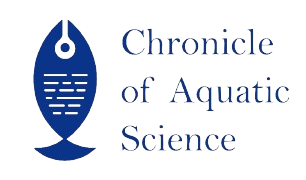| File | Action |
|---|---|
| CoAS_V1IS5_07 | Download |
- 919088951040 call us
- chronicleofaquaticscience@gmail.com Mail us
Revolutionizing Aquaculture by developing Genetically Modified Aquatic Organisms
Popular Article
Revolutionizing Aquaculture by developing Genetically Modified Aquatic Organisms
Sonalismita Mahapatra*, Modi Kiran Piyushbhai and Ambika Binesh
Abstract
Genetically modified organisms introduced with foreign gene of interest to the host genome to improve various traits such as muscle growth, resistance to various condition like disease, thermal diffraction tolerances factor, salinity tolerance and enhance feed conversion ratio. In the present article we described the steps for developing the genetically modified aquatic organism, their applications, risk associated with their potential release in nature environment and regulatory organization associated with it.
Keywords
Genetically modified aquatic organisms, Aquaculture, risk assessment, regulatory bodies for GMO
References
Clifford, H., 2014, October. AquAdvantage® Salmon-a pioneering application of biotechnology in aquaculture. In BMC Proceedings (Vol. 8, No. 4, pp. 1-2). BioMed Central. Karthik, M., Akolkar, D.B., Kumar, V. and Singh, S.D., 2006. Genetically modified fish and its potential applications. AQUACULTURE ASIA, 11(2), p.13.
Rasal, K.D., Chakrapani, V., Patra, S.K., Ninawe, A.S., Sundaray, J.K., Jayasankar, P. and Barman, H.K., 2016. Status of transgenic fish production with emphasis on development of food fishes and novel color varieties of ornamental fish: implication and future perspectives. Journal of FisheriesSciences. com, 10(3), p.52.
Saxena, A. and Jha, P.N., 2013. TRANSGENIC FISH: TECHNIQUES, POTENTIAL AND PROSPECTS. Trends Fish Res., 2, pp.7-16.
Wang, Y., Hamid, N., Jia, P.P. and Pei, D.S., 2021. A comprehensive review on genetically modified fish: key techniques, applications and future prospects. Reviews in Aquaculture, 13(3), pp.1635- 1660.
Jena, A.K., Singh, S.K. and Biswas, P., 2017. Advanced Biotechnological Innovations in Aquaculture for Intensification
Hallerman, E.M. and Kapuscinski, A.R., 1995. Incorporating risk assessment and risk management into public policies on genetically modified finfish and shellfish. Aquaculture, 137(1-4), pp.9-17.
Poulsen, L.K., 2004. Allergy assessment of foods or ingredients derived from biotechnology, gene‐modified organisms, or novel foods. Molecular Nutrition & Food Research, 48(6), pp.413- 423.
Aikio, S., Valosaari, K.R. and Kaitala, V., 2008. Mating preference in the invasion of growth enhanced fish. Oikos, 117(3), pp.406-414.
Mahgoub, S.E., 2019. Genetically modified organisms. In Testing and Analysis of GMO-containing Foods and Feed (pp. 3-43). CRC Press.
Wong, A.C. andjavascript:void(0) Van Eenennaam, A.L., 2008. Transgenic approaches for the reproductive containment of genetically engineered fish. Aquaculture, 275(1-4), pp.1- 12.
Bartley, D.M. and Hallerman, E.M., 1995. A global perspective on the utilization of genetically modified organisms in aquaculture and fisheries. Aquaculture, 137(1-4), pp.1-7.
Aerni, P., 2004. Risk, regulation and innovation: The case of aquaculture and transgenic fish. Aquatic sciences, 66, pp.327- 341.
Dadgarnejad, M., Kouser, S. and Moslemi, M., 2017. Genetically modified foods: promises, challenges and safety assessments. Applied Food Biotechnology, 4(4), pp.193-202. Monien, J. and Cai, Y., 2018. Genetically Modified Organisms Law. Handbook of Agri-Food Law in China, Germany, European Union: Food Security, Food Safety, Sustainable Use of Resources in Agriculture, pp.517- 549.
Raju, K.D. ed., 2007. Genetically Modified Organisms: emerging law and policy in India. The Energy and Resources Institute (TERI).
- Published online
- 30th October, 2023
How to Cite the Article
Mahapatra, S., Piyushbhai, M. K. and Binesh, A. 2023. Climate Change and Their Impact on Food Security. Chronicle of Aquatic Science 1(5): 74-82.
Copyright
This is an open-access article distributed under the terms of the Creative Commons Attribution License (CC BY). The use, distribution or reproduction in other forums is permitted, provided the original author(s) and the copyright owner(s) are credited and that the original publication in this journal is cited, in accordance with accepted academic practice. No use, distribution or reproduction is permitted which does not comply with these terms.

CoAS_V1IS5_07


